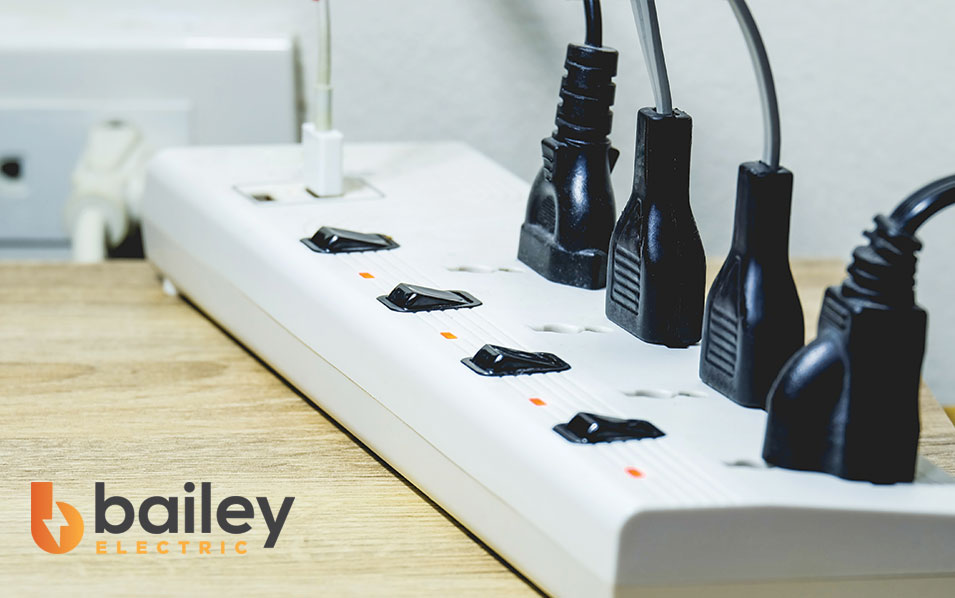
15 Dec Why Should I Use A Surge Protector?
Nowadays, it is quite common for homes to be equipped with numerous electronic devices. Surge protection plays a crucial role in mitigating fluctuations that may occur within your home’s electrical system. If you are curious about the functionality of a surge protector, Bailey Electric is here to provide you with the necessary information.
Why should I use a surge protector?
A surge protector is commonly mistaken as merely an add-on with additional plugs for accommodating more electronics, which can be partially true. However, surge protectors and power strips are similar in their basic functionality. Nevertheless, it is important to note that a surge protector is specifically designed to detect voltage spikes and safeguard the electrical components that are connected to the outlet.
Utilizing a surge protector is advisable when multiple electronic devices require plugging in and need safeguarding against power surges. Surge protectors distinguish themselves from power strips by incorporating a switch indicating their status. Alternatively, whole home surge protection ensures comprehensive defense for the entire house rather than a specific area.
To prevent damage to both surge protectors and connected electronics during inclement weather conditions, it is recommended to disconnect them. For a better comprehension of surge protectors, let’s delve into their mechanics.
Surges Explained
To comprehend the functioning of a surge protector, let’s take a moment to revisit our science class. A surge refers to a voltage increase that surpasses the standard level in an electrical current. These surges occur with lightning speed, less than a thousandth of a second!
In the United States, the standard voltage in the flow of electricity is 120 volts. Any elevation beyond this point puts your electronics at risk of damage. Safeguarding your prized possessions such as laptops, phones, and other valuable electronics requires the prudent investment of one or even two surge protectors.
Voltages Explained
Voltage refers to the disparity in charge between two points along a pathway. Analogous to an uneven scale, one side generally harbors greater energy than the other, resulting in an amplified energy surge.
Excessive voltage, caused by such surges, can inflict irreparable damage to electronic devices and wiring, leading to substantial financial repercussions in the future.
Power Dynamics
The operational functioning of your electronics relies on the flow of voltage. Any surge beyond the standardized 120 volt flow can result in electronics burnout.
Consider it akin to lightning striking. When a lightning bolt hits a power line, the sudden surge of power increases the potential energy and can become so massive that it causes a power outage in your home. In such situations, it is prudent to be proactive by unplugging your electronics if a storm is forecasted.
Contact Your Bailey Electric For Electrical Services
When there are no storms predicted, it is still crucial to protect your electronics from unexpected power surges. If you require an electrical system inspection, Bailey Electric is available to assist you. Our reputable Salt Lake County electricians can guide you in determining whether whole home surge protectors are suitable for your needs.


Jessica Wilson
Posted at 09:18h, 11 MarchInterdum et malesuada fames ac ante ipsum primis in faucibus. Suspendisse ut vulputate libero, ac iaculis neque. Ut pretium, metus eget ultricies euismod, diam nulla lacinia magna, eu vehicula quam lacus commodo.
Ray Quinones
Posted at 09:29h, 11 MarchPraesent volutpat nulla at elit consectetur, eu rhoncus mauris convallis. Donec a dictum justo, ultricies mattis ex. Donec sit amet mollis est, facilisis lacinia justo.